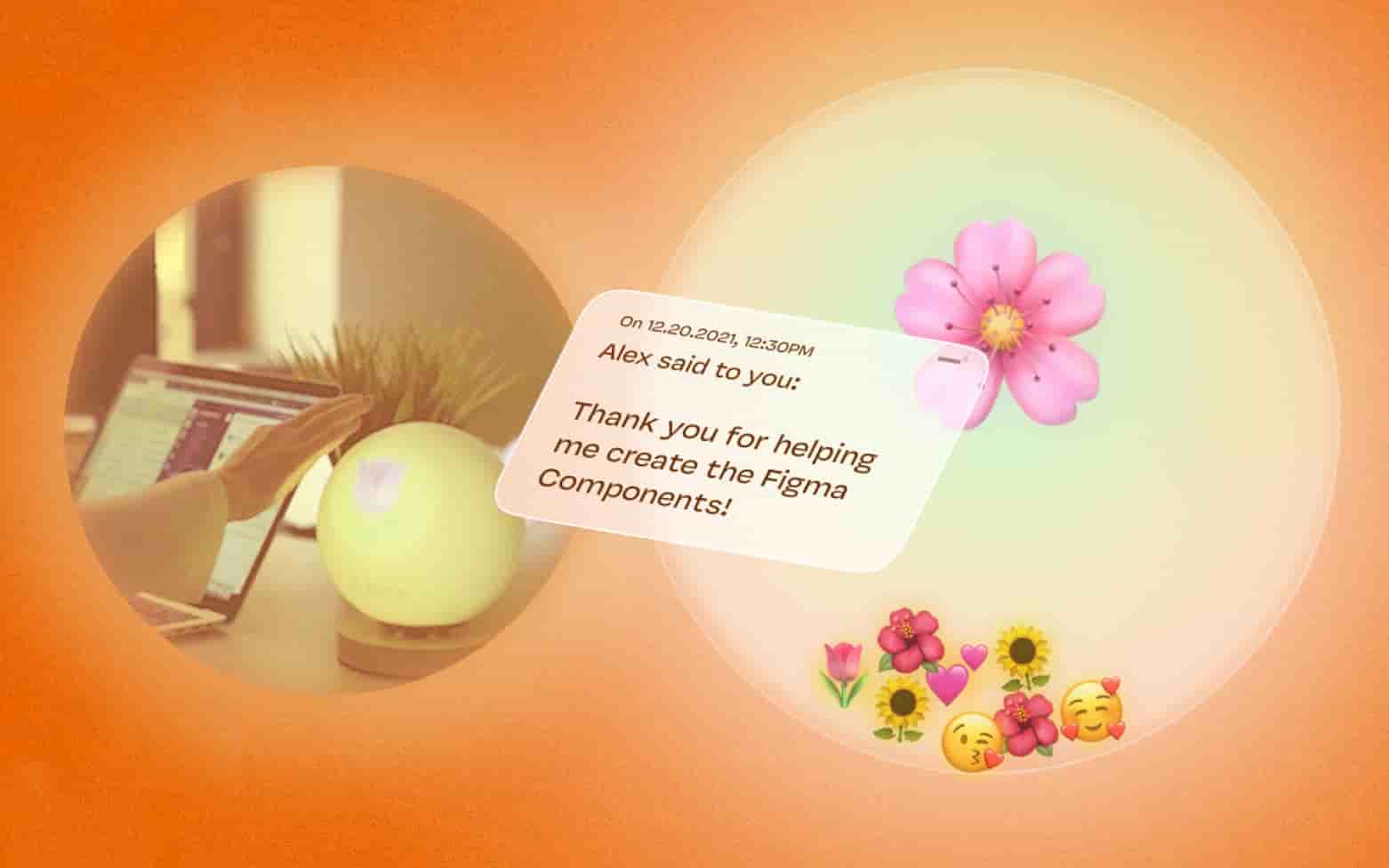How might we encourage the exchange of gratitude between coworkers in remote workplaces?
As COVID-19 pushes people to work remotely, it has become particularly challenging to express and perceive gratitude during work due to the lack of face-to-face interactions.

To address this problem, we designed Co-Orb, an IoT desktop orb that aims to amplify the perception of appreciation sent via work communication platforms by creating a multi-sensory experience that brings thank-you messages beyond screens.
Concept Video
This concept video is submitted as a supplemental material to CHI '22.
Research
Understanding current challenges within remote workplaces when it comes to gratitude exchange
Secondary Research
To better understand the role of gratitude exchange in the workplace and the impact of virtual communication on such exchange, we first conducted literature review and desktop research on existing products targeting workplace appreciation.
Finding #1
Lack of in-person interactions can hinder the successful delivery of gratitude & other emotions.
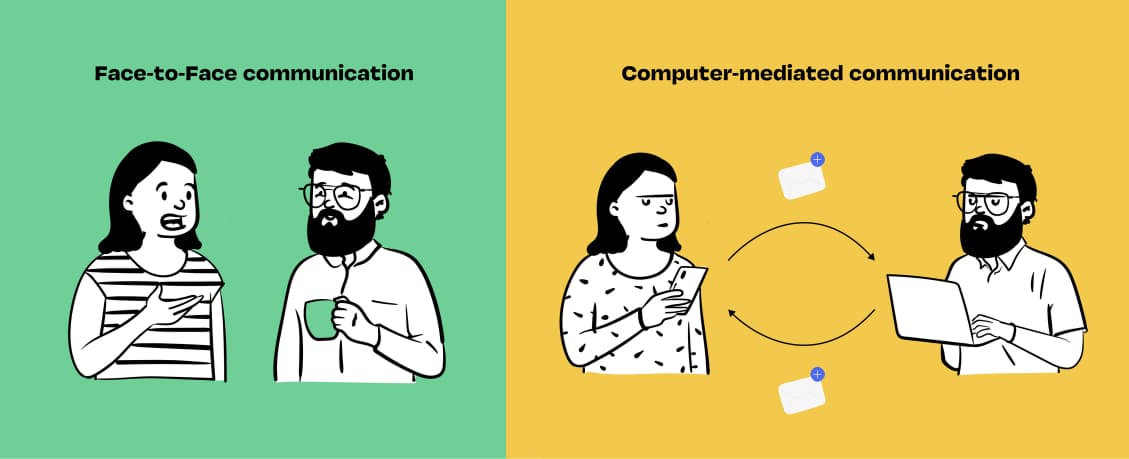
We read 10+ papers in the space of workplace gratitude and virtual communication, and found that computer-mediated communication, such as text messages and emails, often leads to weakened perception of emotions due to the lack of visual and auditory cues that are generally present in in-person interactions.
Finding #2
Existing text-based products might fall short in remote work settings.
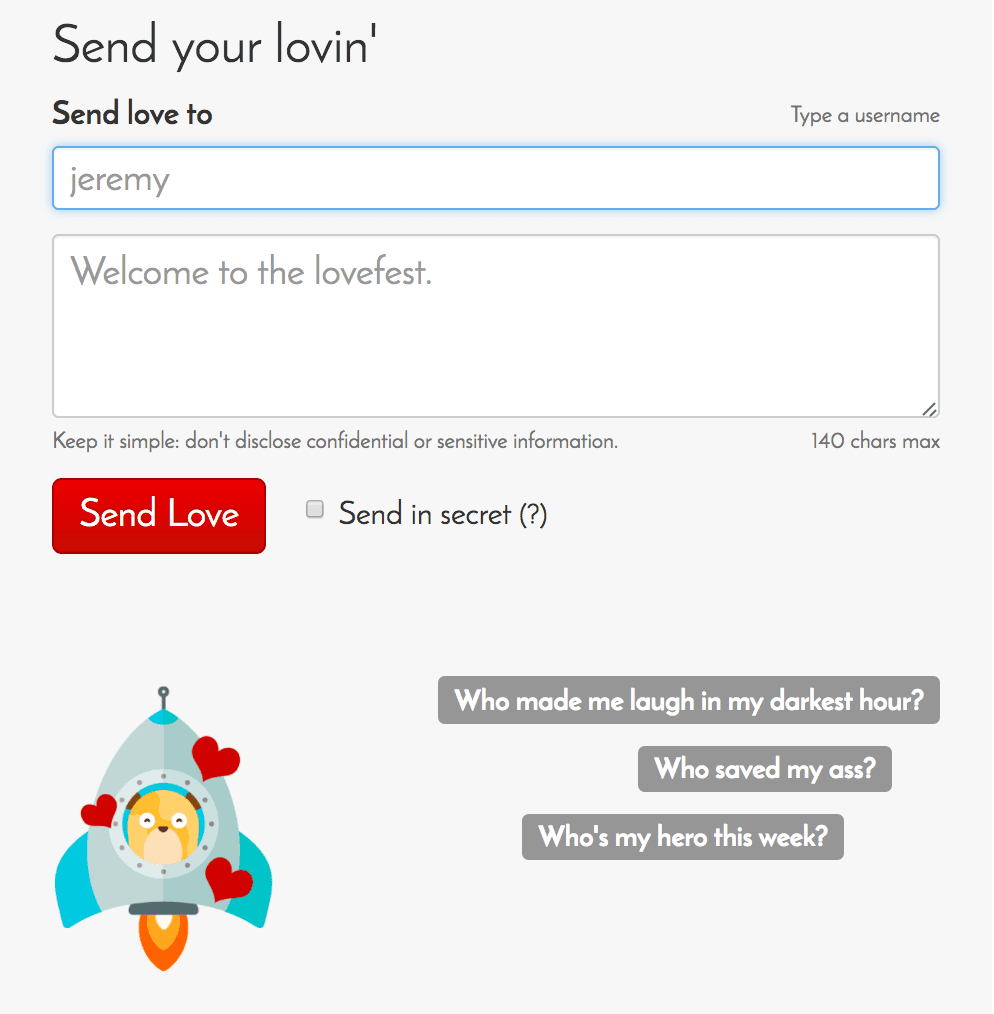
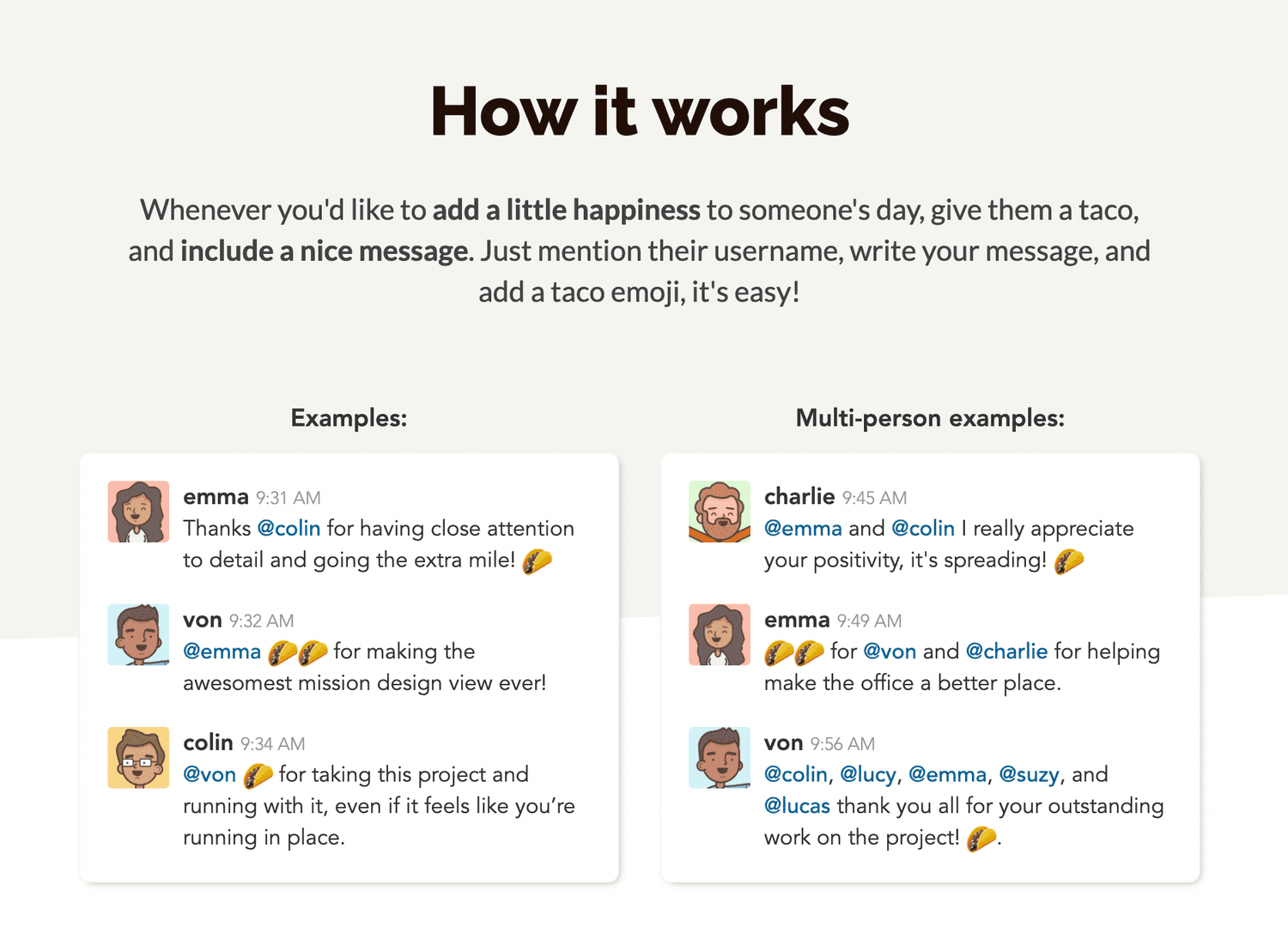
We found products like HeyTaco and Yelp Love, both aiming to encourage the expression of gratitude towards coworkers in the format of messages. However, informed our literature review, we began wondering if text messages were sufficient.
Primary Research
To better understand the actual experience of remote work, we conducted 10 semi-structured interviews with participants from various backgrounds who had at least two-month long remote-work experience during the pandemic.
After synthesizing insights from the interviews, we found three main challenges in gratitude exchange in remote workplaces:
Barriers in conveying rich emotions
through text messages
Timeliness of appreciation
without face-to-face interaction
Feeling overall less acknowledged
than expected in terms of frequency
Based on these findings, we decided on our design focus:
Developing a solution that makes it convenient and enjoyable to express and perceive gratitude amongst co-workers in remote workspaces.
Ideation
In what ways can we enhance the expression and perception of gratitude for co-workers?
We first went about a crazy-8 session to come up with as many ideas as possible that can potentially enhance gratitude in remote workspace. We then discussed all the ideas, and voted for the top 4 that we wanted to further develop.

To validate our ideas with potential users, we each developed a storyboard for one of the four top ideas, and then brought them in front of 8 potential users in speed-dating sessions to collect their feedback and opinions on those initial ideas.
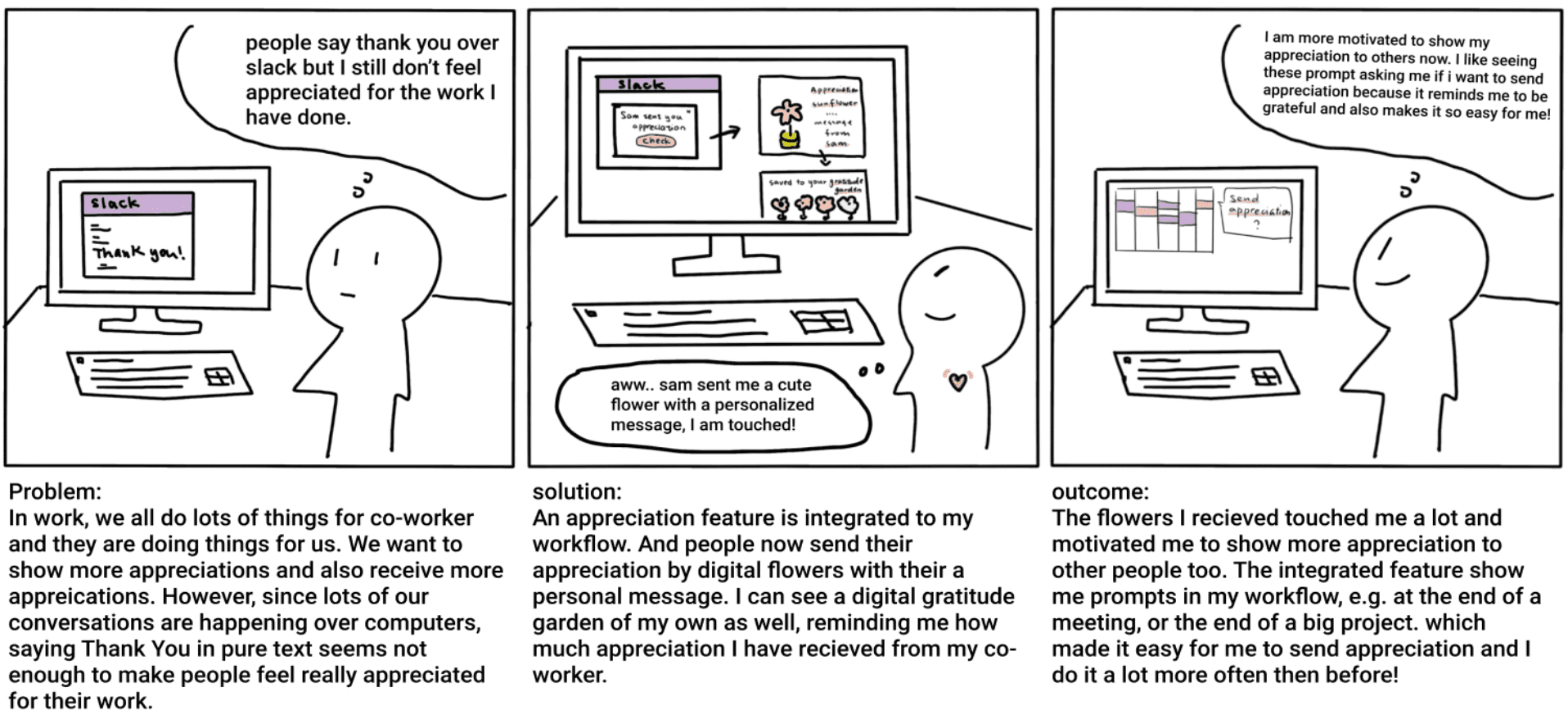
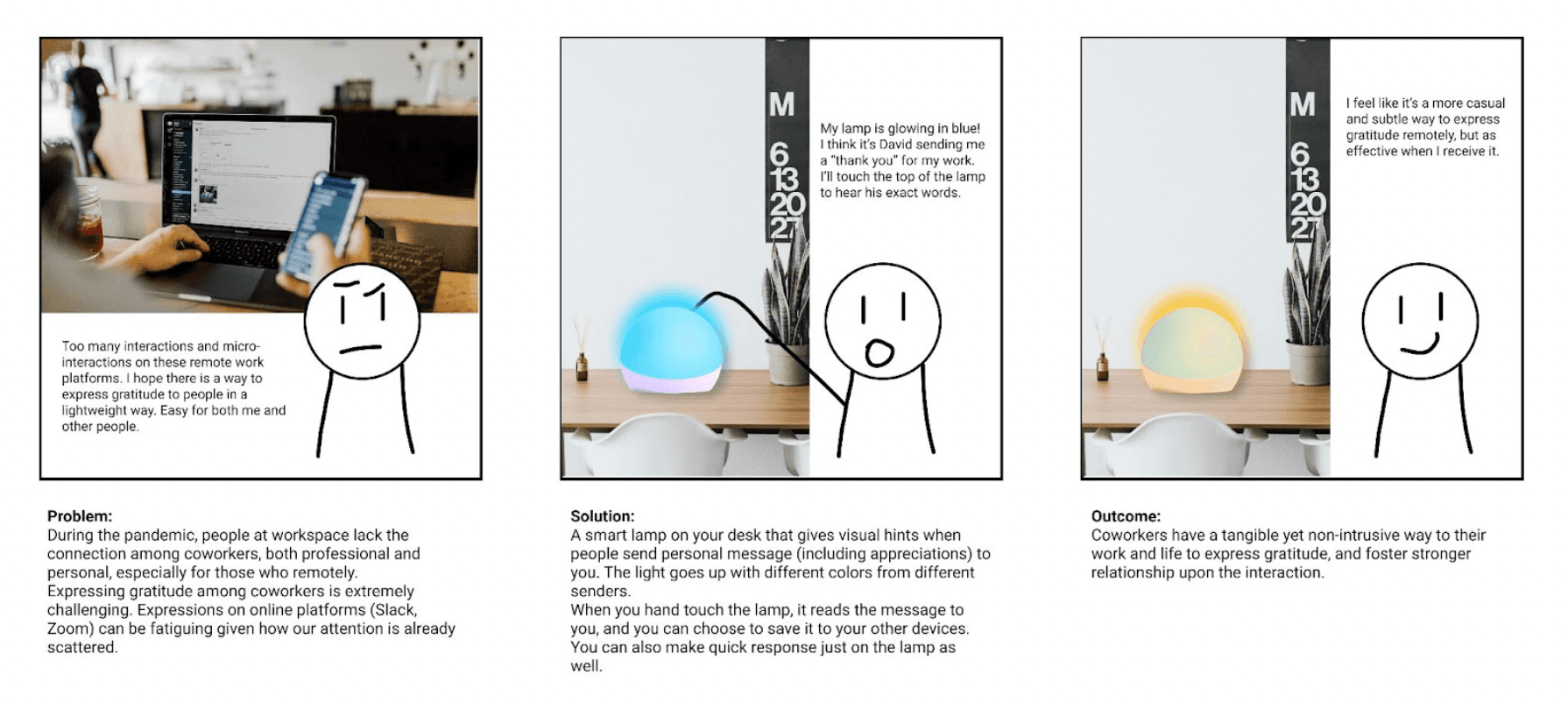
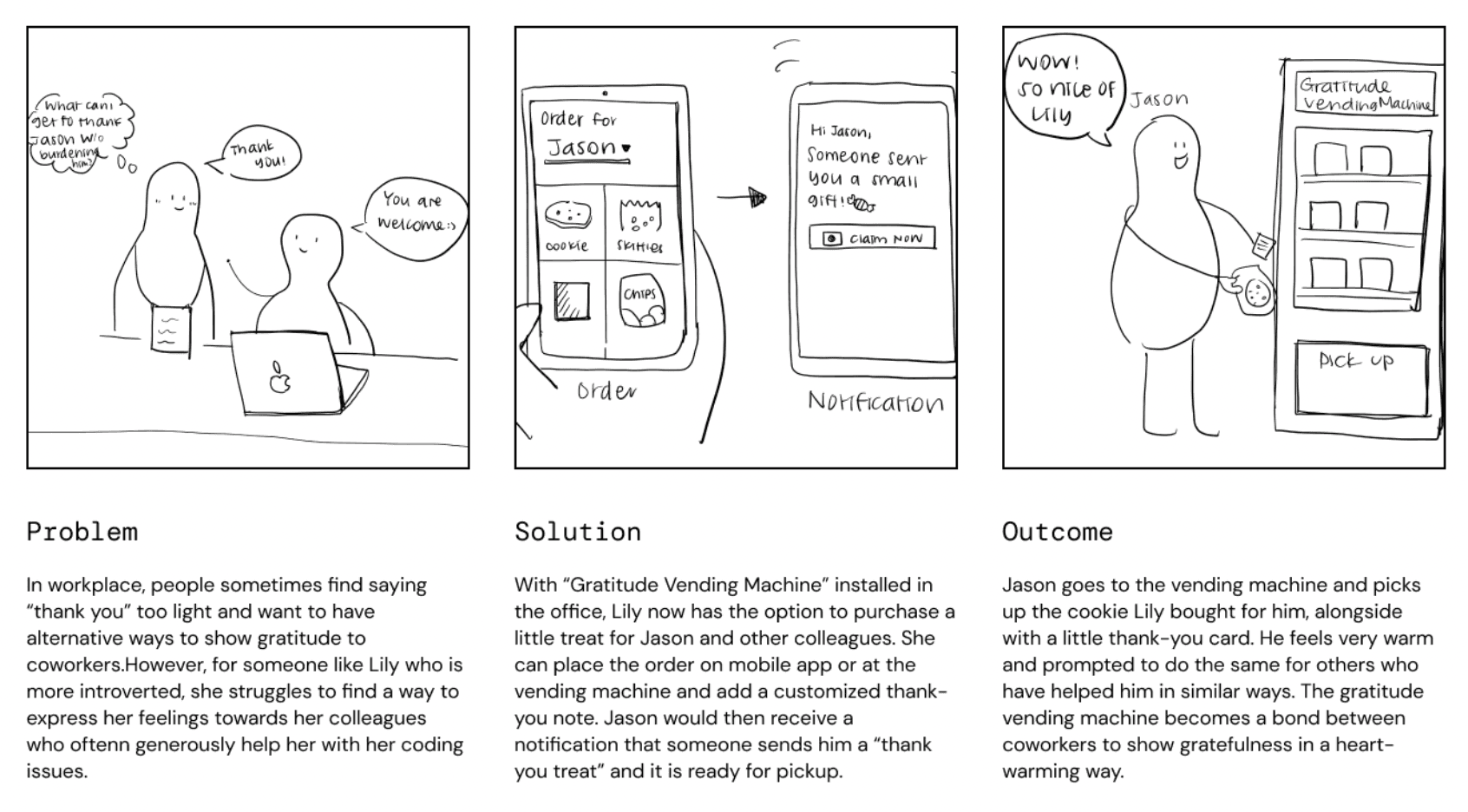
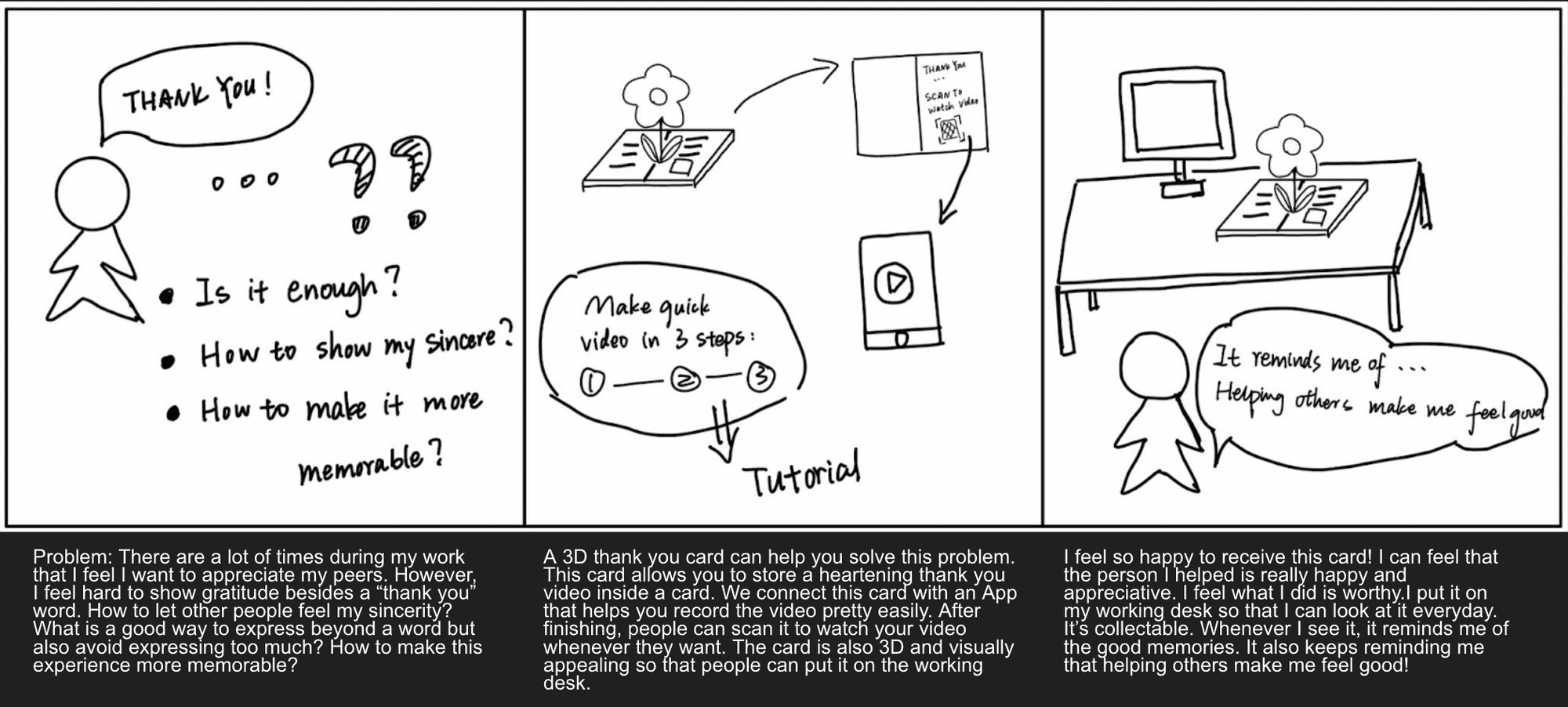
Final Design
A multisensory experience that makes gratitude in remote workspace more tangible & well-received.
The design intervention is comprised of three interconnected components:
Smart Lamp (Co-Orb)
to materialize the digital appreciation message
Plugin Application
to encourage the expression of appreciation
Companion Website
for retriving a collection of past messages
Receiving Gratitude
We wanted to enhance the sense of appreciation carried in text messages by giving it a more tangible form, which is manifested through the orb that is connected to the user’s work communication platform, such as Slack. We chose the medium of light and sound to indicate an incoming appreciation message.
When an appreciation message is sent to the orb, it will light up with a customized emoji and the sender’s name, inviting the user to touch. After touching the orb, the content of the appreciation message will be read out, mimicking the experience of hearing it in person.
Sending Gratitude
Once installed, the plugin app will automatically detect keywords associated with gratitude in the user’s messaging threads and prompt the user to light the recipient’s Co-Orb when a keyword is detected.
Collecting Gratitude
To review all the previous appreciation messages people have received, they can visit their personal Co-Orb’s page which showcases the gratitude collection.
The collection page visualizes all appreciation messages using Emoji as an entry, which makes the message-retrieving experience similar to the gratitude moment on the physical orb.
Design Concepts
Key experiences that we aimed to achieve...
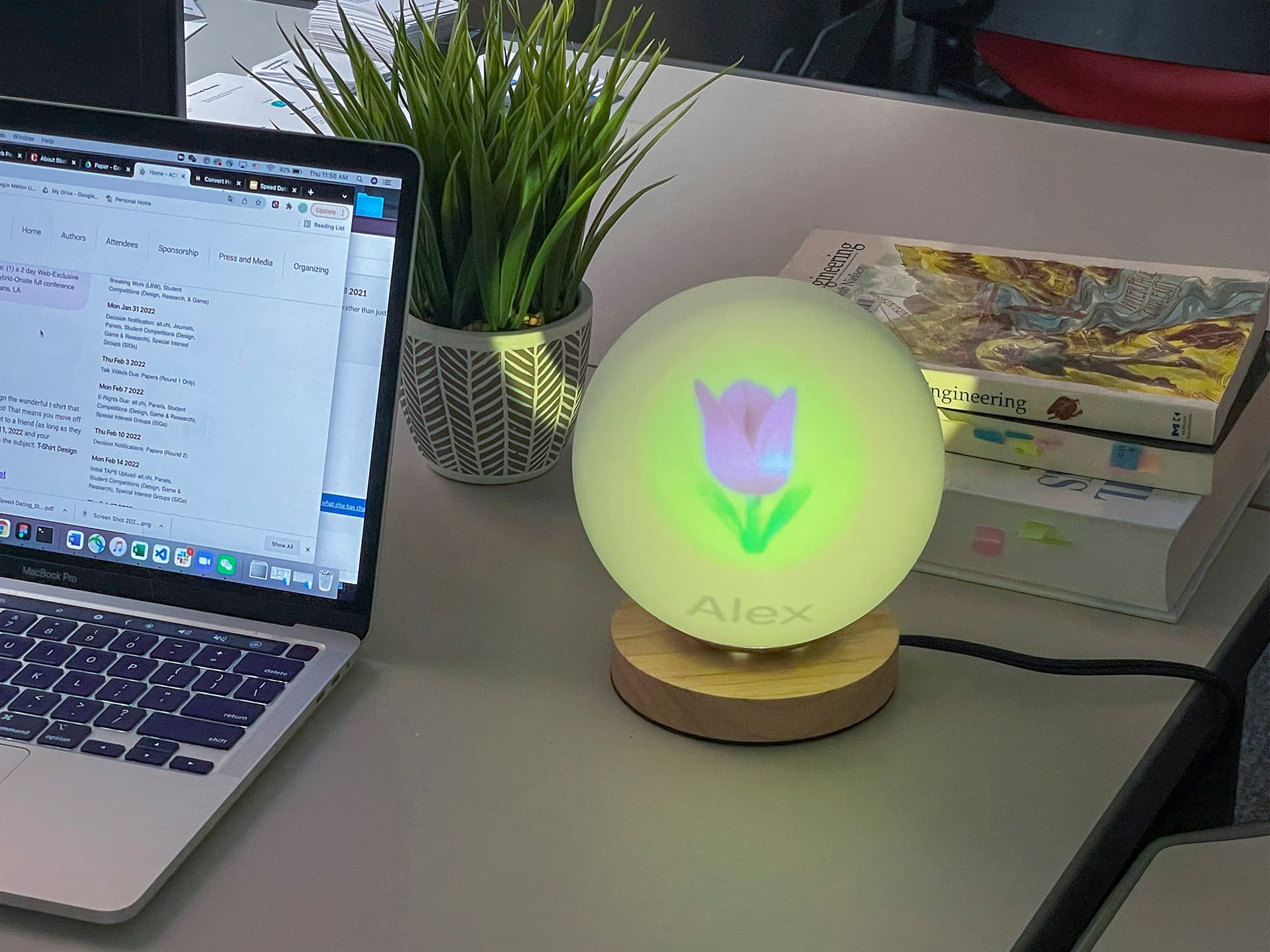
Calmness & Ambience
Designing a piece of artifact that creates and informs calmness rather than disruption was one of our key goals.
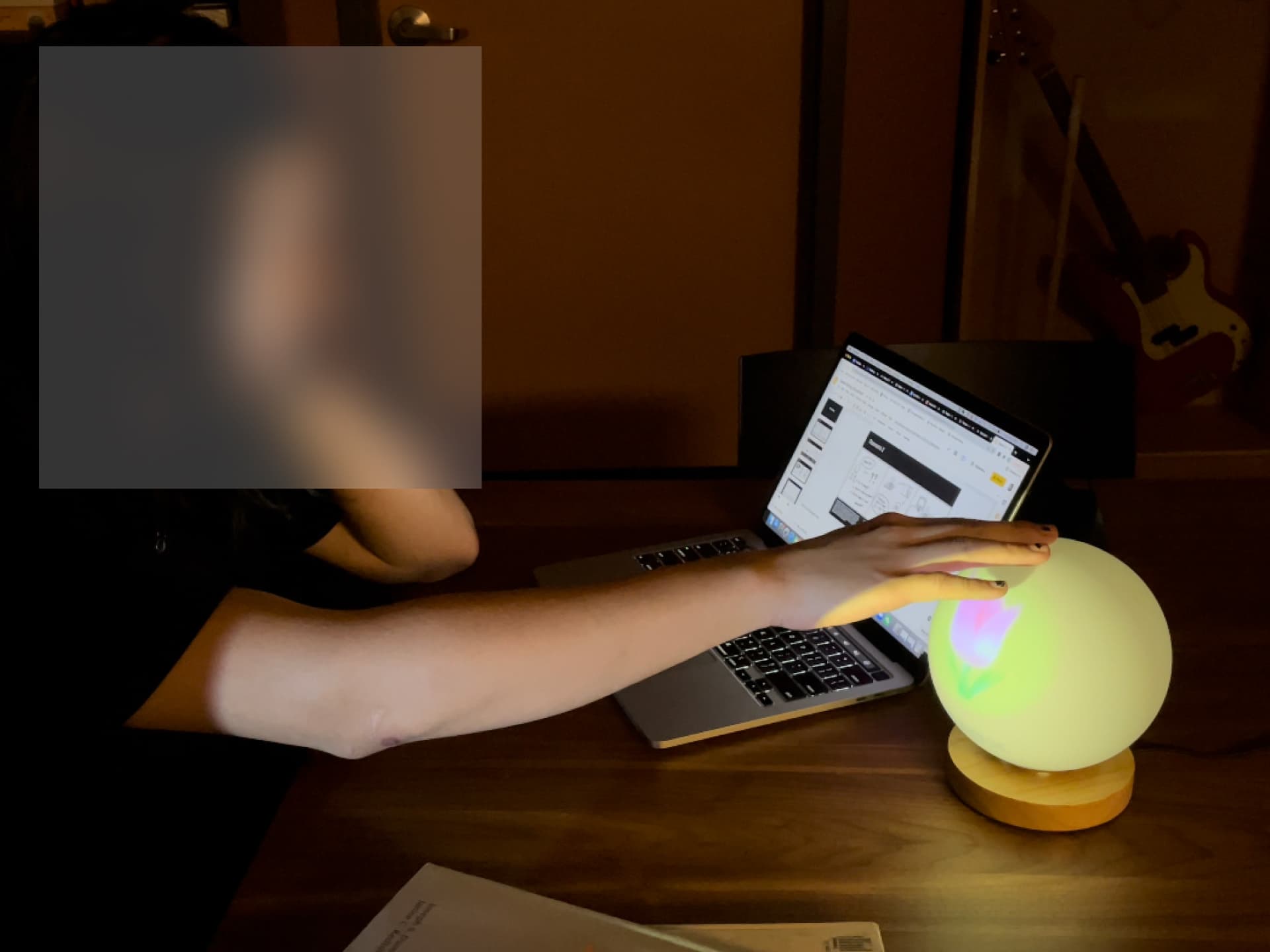
Multi-Modalities
Enriching the experience and bring in more sensory elements present in an actual office, by including touch as input and sound as output.
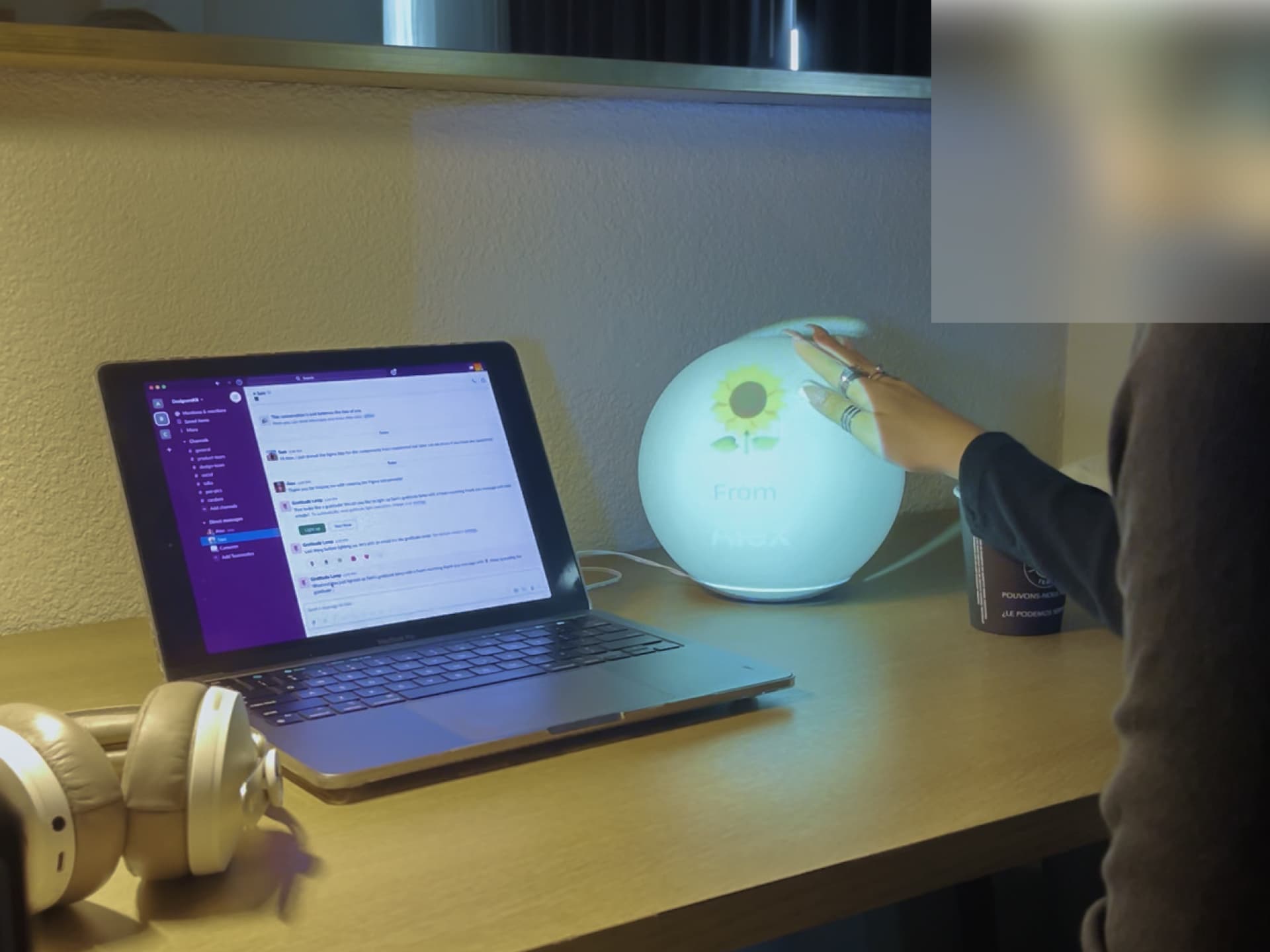
Seamless Integration
Fitting the experience into people’s workflow with minimum amount of interruption and efforts, so that they can actually make use of the intervention in their everyday work.
Acknowledgements
This project was awarded First Prize in the CHI 2022 Student Design Competition. We are grateful for the recognition from the CHI community and the valuable feedback received during the competition.
